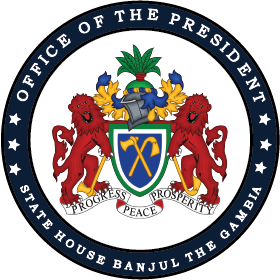OBJECTIVE
To build on existing comparative/ competitive advantages and sectors and create new competitive advantages while also taking advantage of market access opportunities within a framework of a national business enabling environment, with the aim of boosting employment wealth creation and economic growth.
CONTENT
Three Pillars of the Trade Strategy and Policy and support mechanism are:
Strengthening Performance of Existing Sectors that involves the following:
- For specific markets where The Gambia has preferential market access, assess what market opportunities there are for existing products.
- Assess which producers have the potential or existing capacity to meet the export requirements of the identified markets and carry out an audit of these companies to get an exact assessment of what needs to be done to allow the identified producers to start, or significantly increase sales into identified markets on a preferential market access basis.
- Assess what the existing trade barriers in each of these markets are for the identified products.
- For each identified product, assess whether the public sector can assist to remove trade barriers, either directly or indirectly.
Supporting New Sectors that involves the following:
- conduct a study and make recommendations on how The Gambia can take advantage of its proximity to Europe and the United States (including its “ last point of entry” status); its long runway that can accommodate the largest cargo planes; and the modern cargo processing facilities at the airport to make the international port at Banjul a cargo center for breaking bulk and consolidating air freight for the ECOWAS region.
- Identify international ICT companies that provide back-office functions and enter negotiations with them on what they would require to set up operations in The Gambia. If terms and conditions are acceptable, sign performance contracts and monitor these contracts against milestones and benchmarks.
- Enter into negotiations with a large port operator to develop the port of Banjul into a modern port that can take large ships on a partnership basis with a view to entering a concession agreement with a terminal operator that will include investing in the infrastructural upgrades necessary to make the Port of Banjul regionally competitive.
- Carry out a national transport and logistics study for The Gambia that will examine what national transport and the logistic system would best serve the interest of The Gambia, considering the Trade Strategy and Industrial Policy.
Trade and Industrialisation Infrastructure that involves the following:
- Assess the costs and benefits of Export Processing Zones or similar;
- Assess the costs and benefits of industrial parks and how the establishment of industrial parks could be financed – purely by the Government; purely by the private sector or on a public-private partnership basis.
- Assess the costs and benefits of creating an environment specifically designed to attract a particular kind of industry to establish in The Gambia.
- Assess the practicality and feasibility of converting the whole of The Gambia into a duty-free zone.
- Based on the above assessments, make recommendations on the most appropriate path to follow for The Gambia and, after approval of this path, draw up an implementation plan and enter negotiations with potential private sector partners.
Policy Document
-
1.32 MB
Policy Document
Published: 1/1/2018
Sectors
-
Ministry of Public Service
7 documents -
Office of The Vice President
3 documents -
Ministry of Agriculture, Livestock and Food Security
8 documents -
Ministry of Basic and Secondary Education
2 documents -
Ministry of Defence
3 documents -
Ministry of Environment, Climate Change and Natural Resources
9 documents -
Ministry of Finance and Economic Affairs
11 documents -
Ministry of Foreign Affairs and International Cooperation
2 documents -
Ministry of Health
30 documents -
Ministry of Higher Education, Research, Science and Technology
3 documents -
Ministry of Communications and Digital Economy
24 documents -
Ministry of Interior
3 documents -
Ministry of Justice
1 document -
Ministry of Petroleum and Energy
5 documents -
Ministry of Trade Industry and Employment
8 documents -
Ministry of Transport Works and Infrastructure
3 documents -
Ministry of Tourism and Culture
3 documents -
Ministry of Women, Children and Social Welfare
12 documents -
Ministry of Youths and Sports
2 documents -
Ministry of Land and Regional Government
1 document -
Ministry of Fisheries and Water Resources
3 documents -
Office of The President
0 documents

